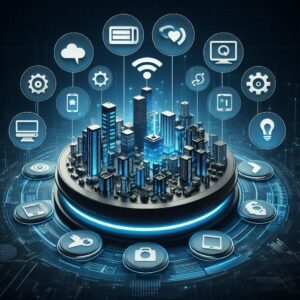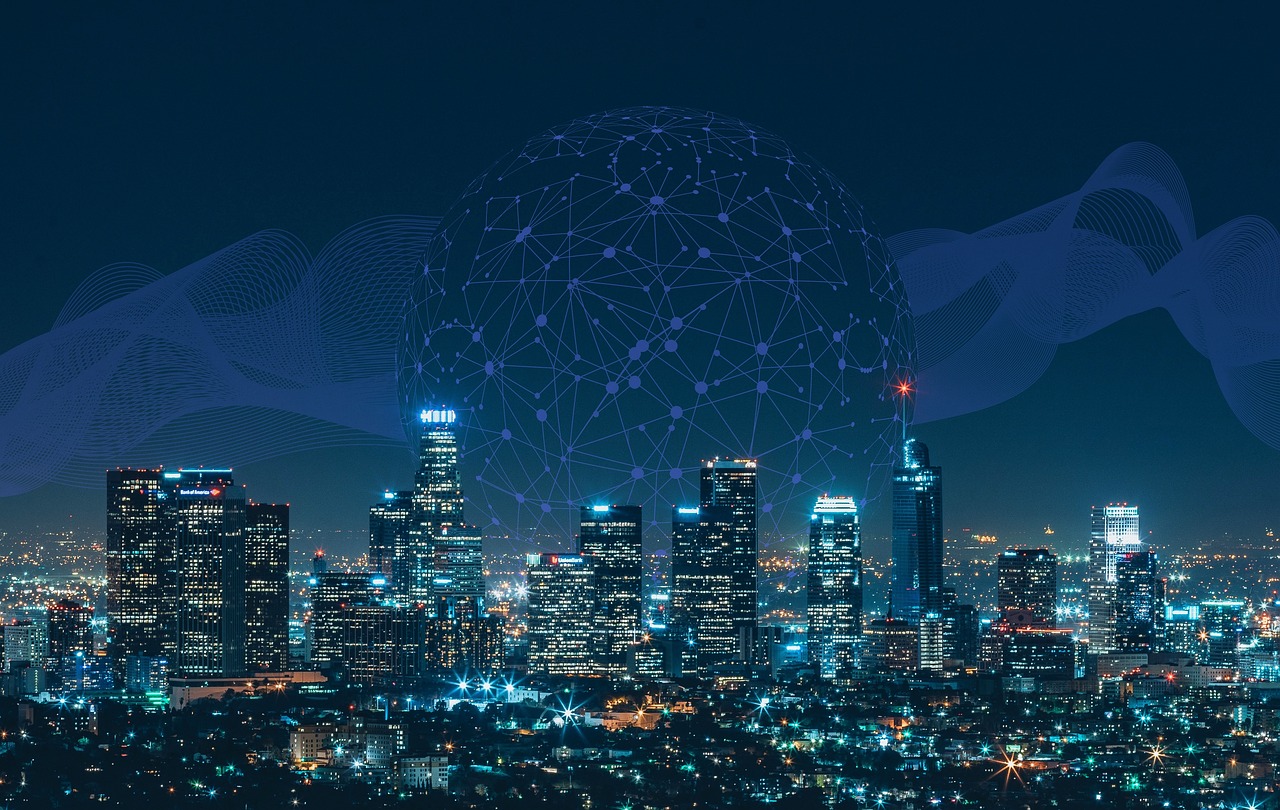How AI and Data Are Powering the Rise of a Smart City Today
A smart city applies advanced technologies such as AI (Artificial Intelligence), IoT (The Internet of Things), and big data to improve urban life, conserve resources, and enhance public services. Cities see the infrastructural needs surge as populations of urban centers undergo a swift increase, with parallel demands for energy, security, and mobility.
The Intelligent Ecosystem is an environment that is intelligent and connected at the same time, and is adaptive in real-time. Hence, all the basis for truly receptive, efficient smart cities have been laid with the advent of SentryLogix Intelligence for AI-Based Surveillance and Data Analytics. In this article, we discuss what constitutes a smart city, how AI and data allow its infrastructure to function, and thus why the need for such a transformation has become critical for the future of urban life.
What Is a Smart City? Understanding the Foundation
The smart city landscape involves the infusion of digital technologies into the traditional urban infrastructure to increase the quality of human lives. Integration could be seen as a panacea for neat toys that make a lot of noise; however, a genuine smart solution should focus on tackling the real issues faced in urban life using data and connectivity, ranging from traffic congestion to energy waste and public safety. The smart solution does not use data and connectivity to obtain fashionable toys; it uses them to address challenges such as traffic congestion, energy waste, and public safety that real-life experiences in cities.
The definition of a smart city is based on four pillars.
- Communication and Connectivity: Sensors/devices distributed all over the city with cloud systems gather/grab data and send it in real time.
- Data Analytics: Centralized platforms identify patterns, track anomalies, or derive predictive insights from the data analyzed.
- Automation and AI: Systems that are intelligent and able to react to changes in inputs and respond to such changes in real time and with little or no human intervention.
- Citizen Engagement: Digital services promote two-way interaction between the government and its residents to generate responsiveness.
For instance, a smart city might employ various environmental sensors to check air quality and then set signals or public alerts according to pollution levels. Artificial intelligence might also be used for surveillance, as in the case of SentryLogix Intelligence, to observe crowd movement patterns and enhance security at public events.
Smart City Systems Through AI and Big Data: From Concepts to Realities
The embodiment of smart cities is geared toward sustainability, safety, and efficiency. They also aim to be resilient and capable of responding in a small window of time to any disruptions, such as natural calamities or failures in infrastructural services.
The conversion of a traditional city into a smart city involves the clustering together of public authorities, private enterprises, and tech companies. The end aim is to make life easier for towns and increase efficiency for citizens while ensuring that the cities can evolve to meet changing lifestyles.
Real-time data is the heartbeat of a smart city, and AI is the brain. As much as big data analytics complements AI systems, this duo enables the evolution of cities from reactive to proactive management.
Decision Making Aided by Artificial Intelligence
By analyzing large datasets through machine learning algorithms from myriad sources (such as traffic cameras, locations of mobile phones, sensors, public service records, etc.), the systems detect incidents and analyze trends. That places city managers in an optimal position in terms of allocating resources and solving problems in a timely manner.
Artificial intelligence can process information on traffic flows in real time and act on this information, for example, redirecting public transport or suggesting to drivers through navigation apps the best possible options located near their final destination to reach in due time. AI-based surveillance systems can monitor the environment for safety and step in when the situation calls for that. An example is the SentryLogix Intelligence: a system using facial recognition, object tracking, and behavior analysis.
Smart city: Big Data in Action

Big data breaks down the so-called information silos. A “smart city” integrates data from diverse departments, including political, energy, water, health care, and transportation, into intermediaries for more efficient collaboration and faster problem-solving.
For instance, some of the actual applications might include:
- Predictive maintenance of roads, bridges, and water infrastructure based on historical data on past performance
- Energy optimization based on the analysis of smart grid data so as to cut wastage
- Public health monitoring based on symptom or outbreak data being reported in real-time from hospitals and clinics
AI and data automate analysis and decision-making processes to create systems that learn and improve over time. Its data processing creates smarter cities. For instance, SentryLogix Intelligence is an intelligent surveillance system that continuously evolves into new data to provide law enforcement with faster and smarter services.
Smart City Trends
Smart cities have already begun affecting human life and working areas, including movement. These cities, assisted by AI and data technologies, are solving design and planning concerns such as issues related to security and the environment.
1. Singapore
A typical example of a model city, Singapore has set up smart sensors, real-time traffic systems, and AI-enabled urban planning tools. The Smart Nation initiative, therefore, attempts to bring together all government services, public housing, and transport on a single digital platform that responds quickly.
2. Barcelona
Barcelona deploys smart water meters, LED (Light Emitting Diode) streetlights, and waste sensors to conserve energy and reduce operational expenses. The city also enjoys real-time management of its public services from this central control center.
3. Dubai
Through its Smart Dubai initiative, the city is employing blockchain, AI, and IoT technologies across over 100 services, from smart policing to healthcare diagnostics. The emirate intends to be 100% paperless through its digital governance system.
4. New York City.
The smart city initiative in New York involves a plethora of measures, which include real-time traffic analytics, facial recognition in public areas, and crime behavior prediction, to name a few, and many are supported by the AI-based video and data surveillance tools.
Conclusion: AI and the City of Tomorrow
After upgrades in sensor technology, real-time analytics, and the AI surveillance systems delivered by industry leaders such as SentryLogix Intelligence, the city can go on to anticipate needs and respond with speed and precision. This technological evolution is more about cultivating a city that is responsive, inclusive, and sustainable. Investing in smart-city infrastructure is an opportunity; it is an absolute necessity for the present day.


